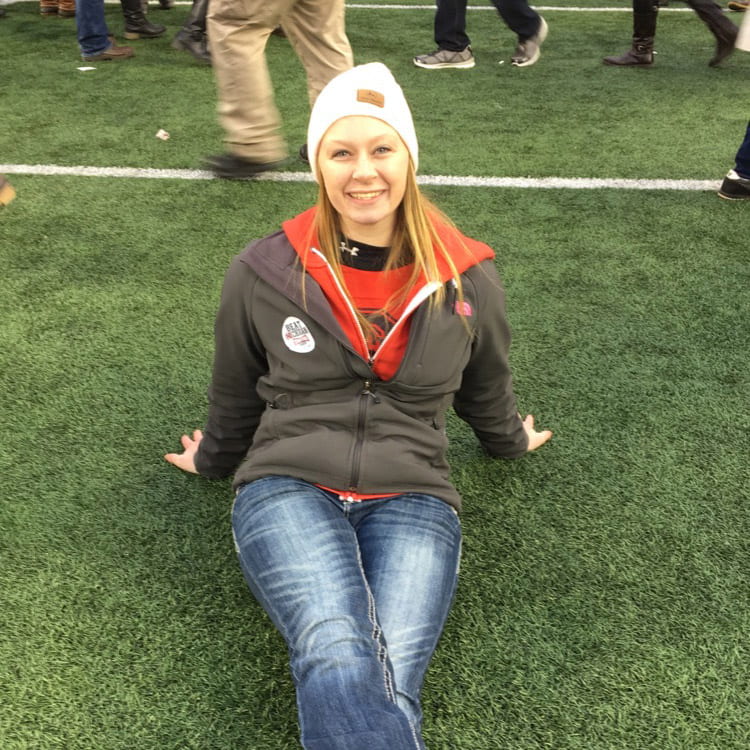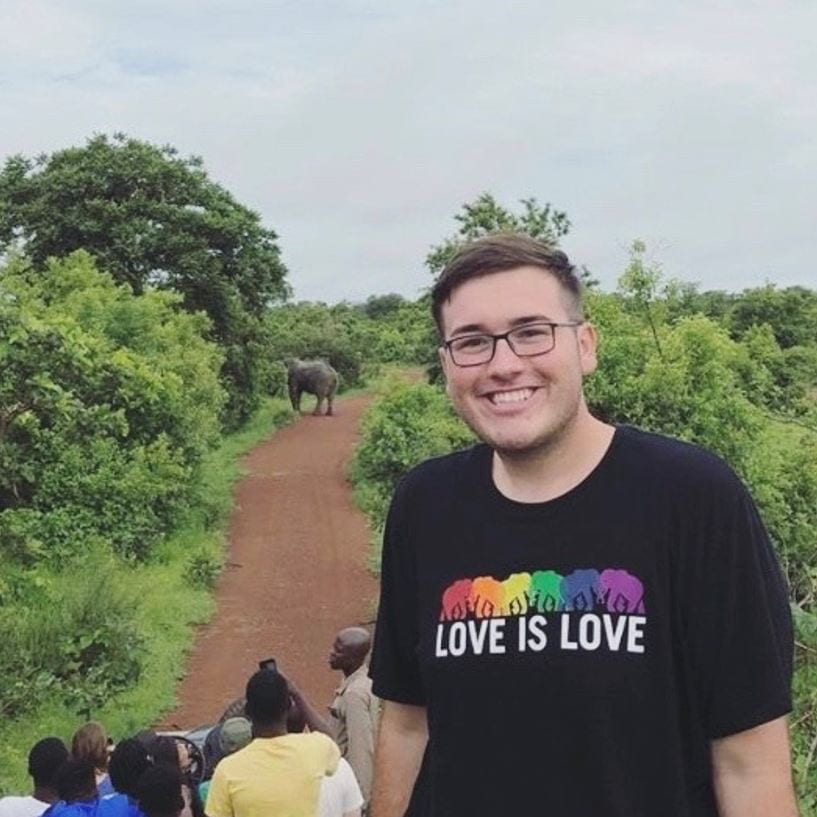
Chase Gasser lines up across from a teammate in a defensive practice drill. Regarded as one of the toughest players on the team, Gasser enjoys the chance to play football for the club team.
By Zachary Steiner
agricultural communication student
Chase Gasser was curiously wandering through the involvement fair on the oval of Ohio State’s campus his freshman year when he saw the OSU club football team booth. This was an open door for him to once again play the game he loved so much—football.
Regarded by his coaches and teammates as someone who embodies the culture of the club team and plays with energy every snap, Gasser has had a successful career. He also is an agricultural systems management major in the College of Food, Agricultural, and Environmental Sciences.
Gasser is a native of Creston, Ohio—a small farming community in Northeast Ohio where he grew up with an agricultural background and playing football each fall for his local high school team, the Norwayne Bobcats.
Originally, Gasser did not know what to expect when he first showed up for practice with the club team. He did not know what it would be like, but he took a chance and club football has since become a full commitment for him.
“I didn’t think it was going to be serious at all. I showed up thinking it was going to be a good old time,” Gasser said. “It was me going out on a limb to give it a try and here we are.”
Gasser, who stands at sturdy 6’2’’ and 220 lbs., is listed as the team’s starting defensive tackle. A man who rocks a long blonde mullet and scraggly facial hair, he fits the job description. His playing style certainly fits the mold as well.
He would describe his demeanor on the field being like a wild man—fitting for someone who prepares for each game listening to AC/DC.
“You just gotta be a wild man. You gotta be gritty. You can never shy down from the guy across from you,” Gasser said. “Playing defensive tackle, those big offensive linemen are often bigger than me, so I can’t be intimidated.”
OSU club football team’s first-year head coach, James Grega, took one look at Gasser and instantly thought he would be a great addition to the team. What gave it away? The long blonde mullet that flows from his grey helmet.
“The first thing that comes to mind is the hair and you see the hair and you think this guy has to be a good football player because you can’t pull off that hair and not be good at football,” Grega said.
Being named to the All-American team for the National Club Football Association his first two seasons, Gasser certainly has a career full of accolades. However, what his teammates most appreciate about him is the leadership he has brought. He exemplifies what it means to be a buckeye on the club team.
“From day one, the first time he came out to practice, you could just see you weren’t going to have a tougher guy on the team, a guy that is going to give everything he’s got every play. He brings a ton of energy to practice and to our games,” Grega said. “He’s been one of those guys who has been instrumental to establish the culture of winning.”
Gasser believes you have to play the game with energy. He prides himself on being a team player—sacrificing for the teammates around him.
“This sport is all about passion and playing for the guy next to you and it is something to have the opportunity to play at a university like this,” Gasser said.
The team is made up of a wide range of people from different backgrounds. Everything from players formerly on the varsity squad to small-town farm kids, Gasser enjoys the challenge of bringing the group together.
“This is the most absurd group of people you will ever see on one team, but somehow we found a way to click,” Gasser said. “You just have so many different people, so many studs in high school who knew they were not going to play division one somewhere, so they came here and found this special club we have.”
The club players at Ohio State are playing because they have a chance to strap up their helmets a few more times before they hang up the cleats for good. Like varsity student-athletes, club athletes must balance their practice and competitions with schoolwork, jobs and whatever else they are involved in.
For Gasser who has been employed at the Ohio State beef and sheep facility since his sophomore year and is a full-time student, this has proven to be challenging.
“Trying to balance chores at the farm, schoolwork, and practice can be tricky at times, but you just have to grind,” Gasser said. “Find those chances to work on stuff and get it done.”
Alike his mentality on the field—playing with a high energy and passion—Gasser attributes his success on the field and the classroom to his upbringing. He believes with 100% certainty that farmers are the toughest people around.
“Everyone on this team knows I live at the OSU Beef and Sheep facility and they think I have this farm strength, farm tough attitude and that is for sure,” Gasser said. “That is what agriculture is. Whether that is physical strength or mental strength, I mean, you look at farmers, they’re the toughest people I know, and I try to carry that same mentality.”
Being the lone agricultural major on the team and clearly standing out from others with his mullet and mustache, his teammates and coaches appreciate his comfort in being himself no matter who is around.
“He embraces who he is, and he doesn’t deviate from who he is at all and I think the guys on the team appreciates that and they gravitate towards it,” Grega said. “Everybody feeds off his energy and his emotions and it is always positive.”
With a motor that never quits, hair that stands out amongst a crowd and the toughness of a farmer, Gasser wants his legacy to be one thing—a national championship.
“The first national championship in OSU club football history. That’s it. That’s what we want,” Gasser said.
This feature story was written by Zachary, an agricultural communication student enrolled in the Agricultural Communication 2531 course during the 2019 Autumn Semester. Dr. Joy Rumble instructed the course.























